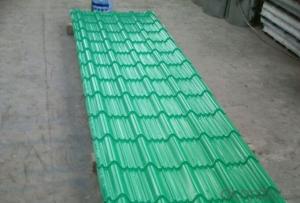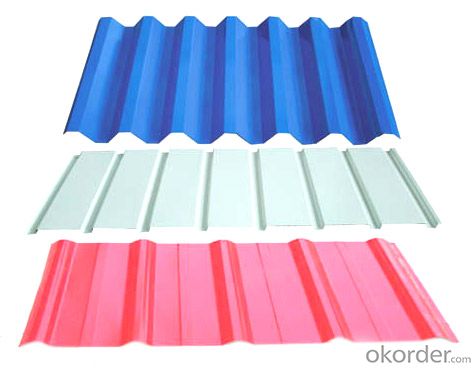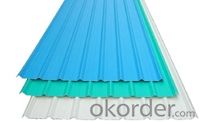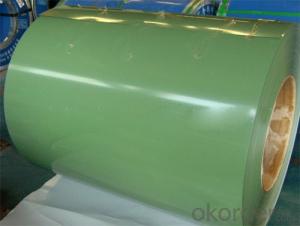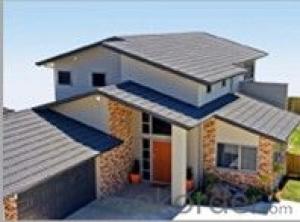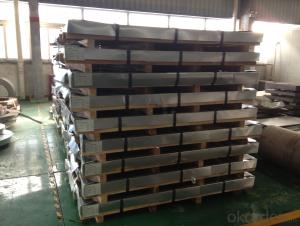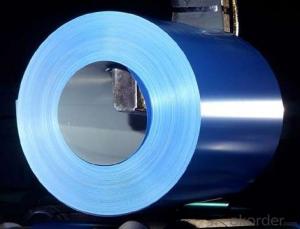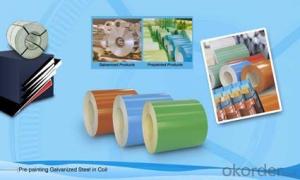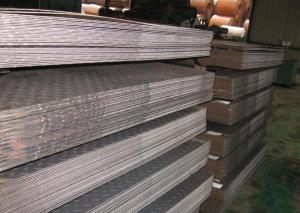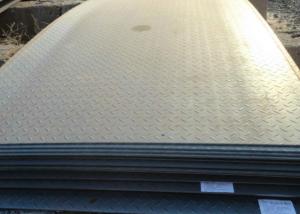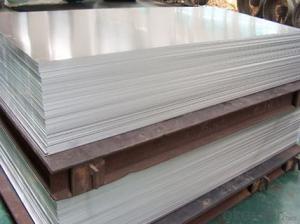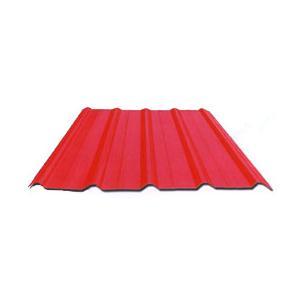Pre-Painted Galvanized/Aluzinc Corrugated Steel Sheet Prime Quality
- Loading Port:
- Tianjin
- Payment Terms:
- TT OR LC
- Min Order Qty:
- 50 m.t.
- Supply Capability:
- 10000 m.t./month
OKorder Service Pledge
OKorder Financial Service
You Might Also Like
1. Pre-Painted Galvanized/Aluzinc Steel Coil Description:
With GI as base material, after pretreatment (degrease and chemical treatment ) and liquid dope with several layers of color, then after firing and cooling, finally the plate steel is called pre-painted galvanized (aluzinc) steel. Pre-painted galvanized steel is good capable of decoration, molding, corrosion resistance. It generally displays superior workability, durability and weather resistance.
2.Main Features of the Pre-Painted Galvanized/Aluzinc Steel Coil:
• Excellent process capability
• Smooth and flat surface
• Workability, durability
• Excellent heat resistance performance
• High strength
• Good formability
• Good visual effect
3.Pre-Painted Galvanized/Aluzinc Steel Coil Images
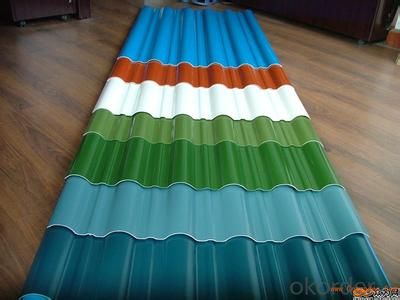
4.Pre-Painted Galvanized/Aluzinc Steel Coil Specification
Standard: AISI, ASTM, BS, DIN, GB, JIS
Grade: DX51D, DX52D
Thickness: 0.17-2.0mm
Brand Name: KMRLON
Model Number: coil
Type: Steel Coil
Technique: Cold Rolled
Surface Treatment: Coated
Application: Boiler Plate
Special Use: High-strength Steel Plate
Width: 20-1250mm
Length: customized
commoidty: pre-painted galvanized steel coil
Thickness: 0.13-4.0mm
width: 20-1250mm
zinc coating: 40-180g/m2
printing thickness: top side: 20+/-5 microns, back side: 5-7 microns
color: all RAL color
surface treatment: color coated
coil weight: 4-7 tons
coil ID: 508/610mm
packaging: standard seaworthy packing
5.FAQ of Pre-Painted Galvanized/Aluzinc Steel Coil
1. What’s the application of this product?
Roof, roof structure, surface sheet of balcony, frame of window, etc.
2. What’s the brand of the paint?
We use the best brand of all of the word—AKZO.
3. How about your company?
A world class manufacturer & supplier of castings forging in carbon steel and alloy steel,is one of the large-scale professional investment casting production bases in China,consisting of both casting foundry forging and machining factory. Annually more than 8000 tons Precision casting and forging parts are exported to markets in Europe,America and Japan. OEM casting and forging service available according to customer’s requirements.
4. How to guarantee the quality of the products?
We have established the international advanced quality management system,every link from raw material to final product we have strict quality test;We resolutely put an end to unqualified products flowing into the market. At the same time, we will provide necessary follow-up service assurance.
5. How long can we receive the product after purchase?
Usually within thirty working days after receiving buyer’s advance payment or LC. We will arrange the factory manufacturing as soon as possible. The cargo readiness usually takes 15-25 days, but the shipment will depend on the vessel situation.
- Q: What is the process of perforating steel sheets?
- The process of perforating steel sheets involves creating holes or patterns in the metal by using specialized machinery. This can be done through methods such as punching, laser cutting, or drilling, depending on the desired design and requirements. These perforations can serve various purposes, including enhancing ventilation, filtration, or aesthetic appeal in different industries ranging from construction to automotive.
- Q: Q235 is hot rolled steel or cold rolled steel?
- Hot rolling and cold drawing is the difference of the production process of hot rolling is processed at high temperature, does not change the structure and properties of metal at high temperature, cold drawn round will be perforated, then in tube processing machine in the cold drawing, no tempering condition, this process will affect the crystal structure of metals. In general, better than the mechanical properties of cold rolled steel, after heat treatment, the tensile and yield strength, plasticity and toughness will be improved, in addition, heat treatment can eliminate the residual stress, and the cold may be because in the process of the steel yield the non-uniform deformation. The residual stress produced, the residual stress has great influence on the stability of.
- Q: What's the effect of water stopping between steel plate and water stop strip? What's the difference between the process and the sealing process?
- Water swelling, water stop, rubber water stop and water stop steel plate are compared between the three:After using the water stopping strip (water stopping steel plate and water stop bar), the water can be prevented from soaking through the concrete, and the double protection function of water proofing and water stopping can be realized.
- Q: What are steel sheets?
- Steel sheets are flat, thin pieces of steel that are made by rolling or pressing steel into different shapes and sizes. They are commonly used in construction, manufacturing, and other industries for various applications such as building structures, automotive parts, and appliances.
- Q: How do steel sheets handle static electricity?
- Steel sheets are generally good conductors of electricity, including static electricity. This means that when static electricity is present, it will easily flow through the steel sheet and dissipate, reducing the likelihood of any buildup or discharge of static electricity.
- Q: What is the process of anodizing steel sheets?
- The process of anodizing steel sheets involves immersing the sheets in an electrolyte bath and passing an electric current through them. This creates an oxide layer on the surface of the steel, which enhances its corrosion resistance and improves its durability. The steel sheets are first cleaned and degreased, followed by anodizing in the electrolyte solution. The voltage applied during anodizing determines the thickness of the oxide layer, which can be further colored or sealed to achieve desired aesthetics and functional properties.
- Q: What are the different sheet metal stamping techniques for steel sheets?
- There are several sheet metal stamping techniques for steel sheets, including blanking, piercing, bending, deep drawing, and embossing.
- Q: What are the different grades of steel used for sheets?
- The different grades of steel used for sheets vary depending on the intended application and required properties. Some common grades include low carbon steel (C1008 or C1010) for general purpose applications, medium carbon steel (C1045) for higher strength and hardness, and high carbon steel (C1095) for applications requiring extreme strength and wear resistance. Stainless steel grades such as 304 and 316 are also commonly used for their corrosion resistance in various industries.
- Q: What is the weight of each steel sheet?
- The weight of each steel sheet depends on its dimensions and thickness, as steel comes in various sizes and densities.
- Q: What are the different coating options available for steel sheets?
- Steel sheets can be coated in various ways, each offering unique benefits and protection against different environmental factors. Some commonly used coatings include: 1. Galvanized Coating: The most widely used coating involves applying a layer of zinc to the surface. This acts as a sacrificial anode, preventing corrosion. Galvanized coating provides excellent corrosion resistance and works well for both indoor and outdoor applications. 2. Galvannealed Coating: Similar to galvanized coating, but further heat-treated to form a zinc-iron alloy layer. This coating improves paint adhesion and weldability, making it suitable for applications that require painting or additional fabrication processes. 3. Electroplated Coating: This process immerses the steel sheet in a solution containing metal ions and applies an electric current to deposit a thin layer of metal onto the surface. Common electroplated coatings include zinc, nickel, and chromium. They enhance corrosion resistance and aesthetics. 4. Organic Coating: Also known as painted or coated steel sheets, this option involves applying an organic material layer like paint, powder coating, or plastic film. Organic coatings protect against corrosion, UV radiation, and abrasion. They offer a wide range of colors and finishes, making them suitable for architectural and decorative applications. 5. Tin Coating: Tin-plated steel sheets have a thin layer of tin applied through an electroplating process. Tin coating provides excellent solderability, corrosion resistance, and food-grade suitability. It is commonly used in food cans and packaging materials. 6. Aluminized Coating: This coating applies a layer of aluminum to the steel surface through a hot-dipping process. Aluminized coating provides excellent heat reflectivity, corrosion resistance, and thermal conductivity. It is often used in heat-resistant applications like exhaust systems and heat exchangers. These are just a few of the many options available for coating steel sheets. The choice depends on factors such as intended use, environmental conditions, and desired properties. It is crucial to consider these factors and consult with coating experts to determine the most suitable option for specific applications.
Send your message to us
Pre-Painted Galvanized/Aluzinc Corrugated Steel Sheet Prime Quality
- Loading Port:
- Tianjin
- Payment Terms:
- TT OR LC
- Min Order Qty:
- 50 m.t.
- Supply Capability:
- 10000 m.t./month
OKorder Service Pledge
OKorder Financial Service
Similar products
Hot products
Hot Searches
Related keywords
